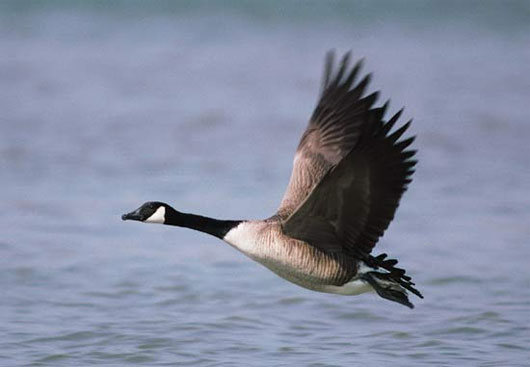Korea: Detection of H5N8 virus in the geese
The Ministry of Agriculture, Forestry and Food Industry of South Korea has just released test results of three wild geese at Dongrim Reservoir, Gochang District, in North Jeolla Province infected with H5N8 virus.
>>>Korea: Detection of H5N8 influenza virus in ducks
Dead geese belong to geese in the reservoir above, where the ducks migrated naturally to death.
This is the first time that geese have been infected with bird flu.

Photo: sallysjourney.typepad.com
Researchers are leaning on the assumption that the H5N8 avian influenza virus is a highly infectious highly virulent strain and is currently undergoing genetic analysis.
In addition, the authorities discovered three more wild ducks in the Lake Geumgang area, which is contiguous between North Jeolla province and Chungcheong province. Currently, the authorities are conducting tests to confirm whether the three wild ducks are infected with bird flu.
Meanwhile, the Ministry of Agriculture, Animal Husbandry and Food Industry has identified an additional duck farm in Julpo commune, Buan district, North Jeolla province infected with avian influenza virus.
Thus, five duck farms in Gochang and Buan districts (North Jeolla province) were found to be infected with H5N8 bird flu virus.
It was destroyed 410,000 birds at 30 farms due to fears of spread, of which 327,000 ducks and 83,000 chickens with a total loss of 4.39 billion won (approximately 4.1 million). USD).
- South Korea: Detection of H5N8 influenza virus in ducks
- The spectacle of the
- The H5N8 bird flu strain appears in chicken farms in Northern Italy
- Spain destroyed more than 17,000 H5N8 suspected ducks
- South Korea confirmed the first Zika infection
- Detection of the H5N1 virus strain by a test
- The 'goose rain' poured into the American city
- The 'rain' of thousands of geese died in America
- 10,000 dead geese die in poisoned lakes in the United States
- Thanh Hoa: A child died from H5N1
- The US discovered the first death due to Zika virus
- Announcing new testing methods for Zika virus detection in 20 minutes
 March 2012: Launching H5N1 vaccine for poultry
March 2012: Launching H5N1 vaccine for poultry Experts comment on the mysterious gradual disappearance of the Delta variant in Japan
Experts comment on the mysterious gradual disappearance of the Delta variant in Japan Danger of the two Delta . branch variants
Danger of the two Delta . branch variants 2020 pandemic flu attack humans?
2020 pandemic flu attack humans?